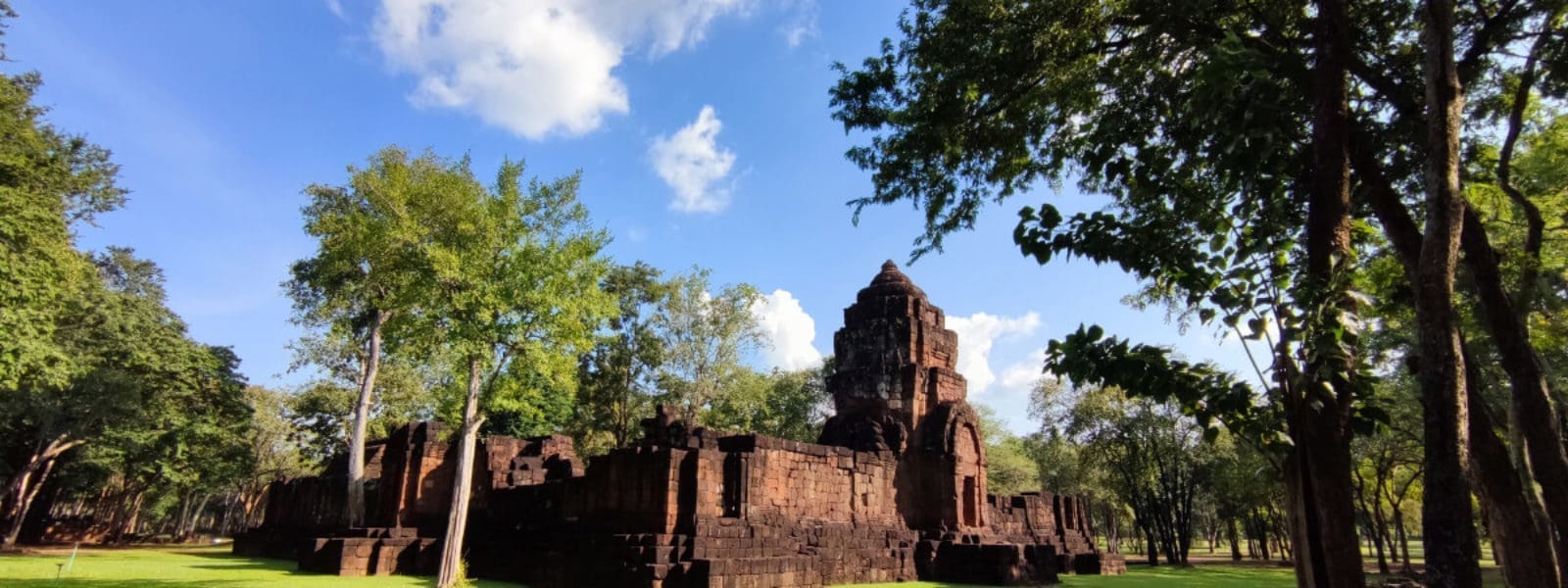Prasat Muang Sing is one of the most important historical sites found by the Kwai Noi River. It marks the westernmost border outpost of the ancient Khmer Empire so far discovered in Thailand. Besides being a temple dedicated to the Hindu God Shiva, it served as a military stronghold. Built to defend the empire from western invasions, it was as well a relay point for trade along the river.
The main Prasat (tower) stands directly opposite the gate. It came up between the 12th and 14th centuries at about the same time as the Angkor Wat in Cambodia. It sits right in the center of the compound and faces east, as most Angkor temples do. In Khmer temple architecture as well as Hindu mythology, the central tower always represents the center of the universe. It is also where the sacred symbol of Shiva power, the Lingam, is en-shrined for worship.
The principal shrine, Prasat Muang Sing, hosts quite a good number of sandstone sculptures. Here you find statues of the eight-armed Bodhisattva Avalokiteshvara, the goddess Prajnaparamita, and the Seated Buddha Statue under the Naga. Many other baked-clay imprinted images of Buddha are also on display in the shrine.
Muang Sing Historical Park
The park sits on approximately 736,000 sqm of well-manicured land. Late-rite walls on three sides and along its river line (north to south) make out the borders around the park. Historians estimate that Prasat Muang Sing (Lion City), and its surrounding structures, was built between 857 and 1157 as a Khmer religious temple.
Smaller shrines and museums, containing various artifacts, provide evidence of the area’s early settlement, long before the Khmer arrival. The Muang Sing Historical Park is indeed the perfect place to learn about those long-gone days.
Add to this the beautiful landscape, covered with trees and flowers, and a very authentic non-commercial feel to it. And, you’ll surely enjoy wandering around the compound!


